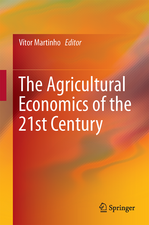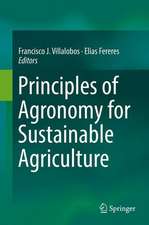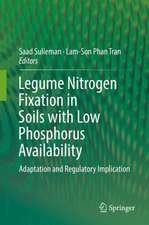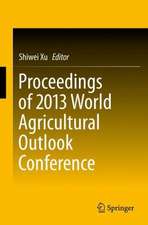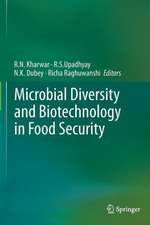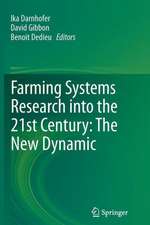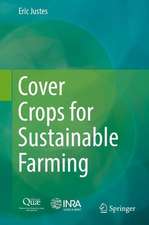Ecological and Genetic Implications of Aquaculture Activities: Reviews: Methods and Technologies in Fish Biology and Fisheries, cartea 6
Editat de Theresa M. Berten Limba Engleză Paperback – 30 noi 2010
| Toate formatele și edițiile | Preț | Express |
|---|---|---|
| Paperback (1) | 1208.52 lei 6-8 săpt. | |
| SPRINGER NETHERLANDS – 30 noi 2010 | 1208.52 lei 6-8 săpt. | |
| Hardback (1) | 1220.76 lei 6-8 săpt. | |
| SPRINGER NETHERLANDS – 31 iul 2007 | 1220.76 lei 6-8 săpt. |
Preț: 1208.52 lei
Preț vechi: 1473.80 lei
-18% Nou
Puncte Express: 1813
Preț estimativ în valută:
231.36€ • 237.94$ • 191.93£
231.36€ • 237.94$ • 191.93£
Carte tipărită la comandă
Livrare economică 20 februarie-06 martie
Preluare comenzi: 021 569.72.76
Specificații
ISBN-13: 9789048161263
ISBN-10: 9048161266
Pagini: 560
Ilustrații: XII, 545 p.
Greutate: 0.78 kg
Ediția:Softcover reprint of hardcover 1st ed. 2007
Editura: SPRINGER NETHERLANDS
Colecția Springer
Seria Reviews: Methods and Technologies in Fish Biology and Fisheries
Locul publicării:Dordrecht, Netherlands
ISBN-10: 9048161266
Pagini: 560
Ilustrații: XII, 545 p.
Greutate: 0.78 kg
Ediția:Softcover reprint of hardcover 1st ed. 2007
Editura: SPRINGER NETHERLANDS
Colecția Springer
Seria Reviews: Methods and Technologies in Fish Biology and Fisheries
Locul publicării:Dordrecht, Netherlands
Public țintă
ResearchCuprins
Overviews Of Ecological Interactions.- Environmentally Responsible Aquaculture—A Work in Progress.- An Ecosystems Approach to Risk Assessment of Alien Species and Genotypes in Aquaculture.- Indicators for the Sustainability of Aquaculture.- Sustainable Approaches for Aquaculture Development: Looking Ahead Through Lessons in the Past.- Population Genetic Considerations.- Genetic Risks of Marine Hatchery Enhancement: The Good, the Bad, and the Unknown.- Preventing Genetic Pollution and the Establishment of Feral Populations: A Molecular Solution.- Behavioral and Genetic Interactions Between Escaped Farm Salmon and Wild Atlantic Salmon.- Genetic Management of Hatchery-Based Stock Enhancement.- Case Studies.- Environmental Impacts in Australian Aquaculture.- Effects of Hatchery Rearing on Asian Seabass, Lates calcarifer, in Sabah, Malaysia.- Disturbance of Korean Lake Ecosystems by Aquaculture and Their Rehabilitation.- Mariculture-Related Environmental Concerns in the People's Republic ofChina.- Indigenous Species for African Aquaculture Development.- The Introduction of Nonnative Fishes into Freshwater Systems of Peru.- of Exotic Species and Transplantation of Native Species across River Basins in Venezuela.- Impacts of Non-Native Fish Species in Minas Gerais, Brazil: Present Situation and Prospects.- Salmonid Introductions in Patagonia: A Mixed Blessing.- Introduced Anadromous Salmonids in Patagonia: Risks, Uses, and a Conservation Paradox.- Addressing Problems Associated with Aquaculture and Aquaculture Effluents in the USA: A Historical Essay.- Productivity of Alaska's Salmon Hatchery Ocean Ranching Program and Management of Biological Risks to Wild Pacific Salmon.- Empirical Results of Salmon Supplementation in the Northeast Pacific: A Preliminary Assessment.- Positive Approaches To Environmentally Sustainable Aquaculture.- Macrobenthos as Biological Indicators to Assess the Influence of Aquaculture on Japanese Coastal Environments.- A Simple Experiment in Polyculture: Red Sea Bream (Pagrus major) and Ulvales (Ulva pertusa).- Microalgae, Macroalgae, and Bivalves as Biofilters in Land-Based Mariculture in Israel.- Beyond the Monospecific Approach to Animal Aquaculture—The Light of Integrated Multi-Trophic Aquaculture.- Using Natural Ecosystem Services to Diminish Salmon-Farming Footprints in Southern Chile.- Conclusion.- Environmentally Responsible Aquaculture: Realities and Possibilities.
Textul de pe ultima copertă
Aquaculture is a rapidly growing industry and aquaculture practices can directly interact with and depend upon the surrounding environment. Therefore, the effects of all types of aquaculture on living natural resources and ecosystems are of significant and increasing national and international interest. In Ecological and Genetic Implications of Aquaculture Activities, numerous nationally and internationally prominent aquaculture researchers contribute 27 chapters that comprise overviews of aquaculture effects on the environment, discussions of genetic considerations, thorough documentation of aquaculture effects and their solutions specific to countries, and approaches toward environmentally sustainable aquaculture. Together, these chapters comprise a comprehensive synthesis of many ecological and genetic problems implicated in the practice of aquaculture and of many proven, attempted, or postulated solutions to those problems. Many chapters can serve as benchmark documentations ofspecific aquaculture effects on biodiversity at different levels. The authorship is broadly international; the authors represent 18 different countries or international agencies and all continents except Antarctica. The aquaculture effects and their solutions range from local to global and simple to highly technical. Effects common to many levels and types of aquaculture emerge, as well as both common and unique solutions.
Aquaculturists, aquaculture researchers, aquaculture industry developers, conservation biologists, environmental scientists, resource managers, and policy makers should find this book interesting and informative.
Aquaculturists, aquaculture researchers, aquaculture industry developers, conservation biologists, environmental scientists, resource managers, and policy makers should find this book interesting and informative.
Caracteristici
Provides detailed descriptions of proven novel and interesting solutions to common aquaculture problems Provides worldwide overviews of major environmental and/or genetic effects of aquaculture An outstanding source of references for all types of aquaculture activities and all types of ecological and genetic effects that result from the practice of aquaculture










